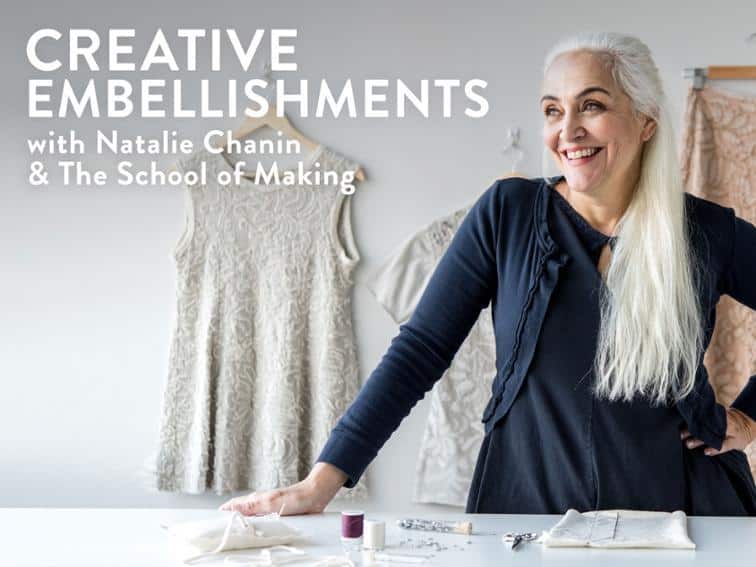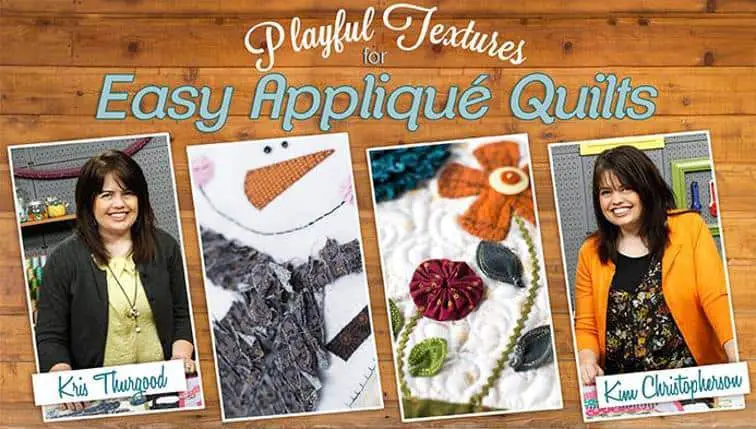What Embellishments Can You Add To A Quilt? Ideas and Tips To Get You Started
Adding embellishments to your quilted projects help to make them really stand out. This practice is mainly used in the world of art quilting, but it is becoming more and more common in traditional quilting as well.
In the past, the most common instance of adding an embellishment to a traditional quilt would be simply adding a button, tied with embroidery floss at a corner where to two different fabrics meet. It could also be added to the center of a quilt square.
Today, embellishments have grown way beyond buttons and embroidery floss. Here you will learn why you may want to add embellishments to your quilted projects. You will also learn about the different kinds of embellishments, how to use them and tips for getting started.
Why Add Embellishments to Your Quilt?
Texture – While the actual quilting adds quite a bit of texture, adding embellishments can take texture to a whole new level. Suddenly your project will become multi-dimensional, keeping the observer interested.
Movement – Embellishments help add movement to a piece so that your eye keeps moving around, discovering all of the parts that make the whole. Leaves could be sewn in a downward path with some hanging over the edge of the quilt to resemble falling leaves. Swirling fibers could resemble wind.

Sentimental Value – An embellishment can be added as a tribute to a loved one. You may sew part of your grandmother’s hand-embroidered handkerchief to a wall-hanging. This is also a great way to preserve something that reminds you of a loved one.
Personal Style – You can show off your personal style as an artist by adding embellishments. If you are someone who loves creating with glitter and sparkles, then add some rhinestones. If you prefer soft and subdued, then perhaps use some stretched batting for clouds.
Read on to learn about different types of embellishments with suggestions of how to use them. This list is not all inclusive. Once you start looking at everyday items with the possibility of becoming an embellishment, you will start finding lots of your own ideas too.
Read: Can You Make a Quilt With A Regular Sewing Machine?
Embellishments and How to Use Them
1. Beads and Buttons
With so many different kinds of beads and buttons to choose from, you have nearly endless options of designs to add to your quilted projects. They are used very similarly because they are usually round and can both be sewn on.
You can place a single bead or button at corners where the different fabrics come together. You can even mimic quilting by using beads instead of just stitches to quilt something. This is time-consuming, so it may be better for smaller projects.
Long tube-shaped beads can be used to create stems and leaves for flowers. Clusters of other beads can be used to create flowers. A line of beads can be used from a flower to a bee to show movement. A shaped-button such as a fish can be added to an appropriate scene or one can be created by stringing together beads.

2. Torn Fabrics
Torn fabrics add texture and can really help with movement on a quilt as well. Most fabrics leave frayed edges when they are torn, which is what you want for texture. You can fray them more by running a bristle hairbrush over the ends.
Many different types of fabrics can be used, though silk is very popular. It does not have a lot of weight to it, so it is easy to use. Silk can be dyed if you need certain colors to match the fabric you are already using.
It can be layered on top of the quilted project until the desired effect is achieved. It can be bunched up or left flowing. In wall hangings, torn silk makes a nice trim for the top or the bottom as well.
3. Felted Wool and Felt
An art all of its own, felted wool has become very popular and is crossing over from just making little animals to adorning quilted wall hangings of all kinds. It is very durable and easy to manipulate, making it perfect for creating exactly what you want.
Those who are not familiar with felted wool often confuse it for regular felt. The main difference is that felt is woven and felted wool is not. Also, while felt can be made from wool, it can also be made from synthetic fibers.
Felt can also be used as an embellishment. It is most often combined with other embellishments in order to have some dimension. A piece of felt cut into a flower shape can be the background of a flower that also has some tulle for extra petals and a button for its center.
4. Tulle
Tulle is light-weight and easy to use. It can be bunched up, folded, gathered and held together in certain spots to create all kinds of flowers or just artistic looking collages.
There are many different kinds of tulle to choose from. Shimmer tulle is great for adding a bit of sparkle while glitter tool will really a big punch of sparkle. There is also matte, foil and heavy tulle.
Matte tulle is the standard and is simply a flat color. Foiled tulle is metallic and is great for adding scales to a mermaid or dragon. Heavy tulle will stand up on its own for a three-dimensional look.
5. Pompons
Pompons are such a fun and versatile embellishment. They come in several different styles. Some you can still see the strands of yarn individually and others have frayed the yarn to the point where it just looks like a fuzz ball.
You can purchase them already strung together to sew on as a border. You can also purchase them separately to use in creating collages or simply adding a nose to a clown.
You can also make your own pompons with a kit like this one. This is a great way to get the exact color and size that you need for your project.
6. Lace
Lace is timeless and will look great on any project. It comes in a huge variety of sizes and patterns. You can buy it by the yard in most fabric stores in widths anywhere from a few inches to six feet or more.
You can purchase lace in many different colors or you can dye it to match your project. If the fabric is synthetic, just be sure to have dye that it meant for synthetics.
You can use lace as a backdrop for another embellishment. You can also cut out designs from lace to appliqué onto your project. You can even use it just as a simple border.
7. Fibers
One of the hottest trends right now is using multiple fibers together on a quilted project. These can be ribbons, metallic thread, yarn, embroidery floss or cording. Using the different fibers together adds lots of fun texture and movement.
Water is most often depicted with fibers. Sewing them down in waving patterns, overlapping and in abundance will make a realistic-looking ocean. They are great for a sunset or sunrise as well, intertwining the different shades of colors.
Fibers are also great for depicting wind movement on a fall leaf wall hanging or a snow squall in a winter scene. Finally, it makes a great fringe for the edges of any quilted project.

8. Heirlooms
Memory or tribute quilts with heirlooms attached can be so comforting and a great way to remember a loved one. You could use pieces of a loved one’s clothing or a clipping from a favorite decorative pillow they owned.
If you have special jewelry, like maybe a string of pearls, they could be incorporated as well. You could also stitch on a special pendant or pin. It is recommended to use jewelry only on wall-hangings or other decorative items that will not be heavily used.
Other popular items to attach are embroidered handkerchiefs and neckties. Quilt squares can be designed around handkerchiefs. Neckties can be cut and put into a beautiful star pattern.
9. Rhinestones and Sequins
If you want to add just a hint of sparkle, sewing on individual sequins here and there will do the trick. If sequins feel a little plain to you, then a great option is using rhinestones with a hotfix tool.
These are easy to apply and last longer than if you simple use a glue. They come in multiple sizes and many different colors. This is a great kit to get started with.
When you apply sequins or rhinestones, you can highlight a certain area by putting them where fabrics come together. You can also use a line of them to showcase a particular area or run a border of them around a design in your fabric. The options are nearly endless and it is a bit addicting once you get started.
Check out this FREE Guide to Quilting Embellishment Techniques From Quilting Daily!
10. Items From Nature
You can really make some amazing landscape wall hangings by bringing in a little nature. Use seashells, coral, feathers, small pebbles and even twigs to showcase your project.
Be sure that they are the same scale as the design so that they compliment it rather than stand out awkwardly. Make sure they are completely dry and spray them with a sealant before attaching them.
It is recommended that you only use nature items in a wall hanging or other project that is for display only.
There are so many fun ways to add embellishments to your quilted projects. Now you just need to decide how you will incorporate them.
There are two different ways to approach which embellishments you will use. You can choose the embellishments first and then design the quilted project around them. For example, you may want to highlight your great-grandmother’s button collection, so you decide to make flowers out of the buttons on a wall hanging and design the rest of the design around the flowers.
You may choose the quilt pattern first and then add embellishments to highlight certain areas. On a more traditional quilt, you may add pompons to your border or perhaps a felted wool flower in the center of each quilt square. On an art quilted wall hanging, you may add some pulled batting to the bottom of a waterfall to mimic foam.
Whatever you decide, enjoy the process and have fun! Here are some great tips and tricks to get you started on your journey adding embellishments to your quilted projects.
Tips and Tricks
1. If the item is able to sewn, then sew it on. If it is a heavier charm or pendant, use a heavy thread or embroidery floss.
2. Consider using a two-sided fusible interfacing to hold embellishments that are made of some sort of fabric or fiber. Then also sew around it, if possible.
3. For items such as seashells and other items that cannot be sewn, use glue that is made for fabric as well as other materials. Aleene’s Super Fabric Adhesive is perfect for the job. It dries clear and is waterproof.
4. Be sure that your embellishments are appropriate for the project. If you are adding them to an actual quilt that someone may end up sleeping under, then use smaller embellishments such as beads, buttons and rhinestones. Save seashells and twigs for wall hangings, where no one can get hurt by them.
5. Shop at thrift stores for old jewelry, embroidered handkerchiefs and interesting scarves.
6. When using multiple layers of torn fabrics or fibers, use varying shades of the same color near one another to add more depth.
7. Do not limit yourself to ideas that you see here. If you like something and can find a way to attach it to your quilted project, then go for it. This is your masterpiece.